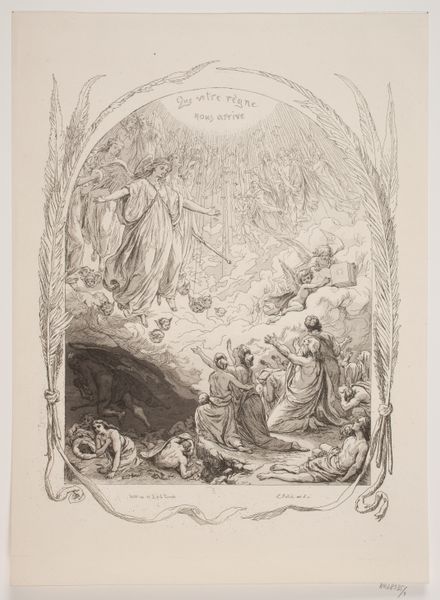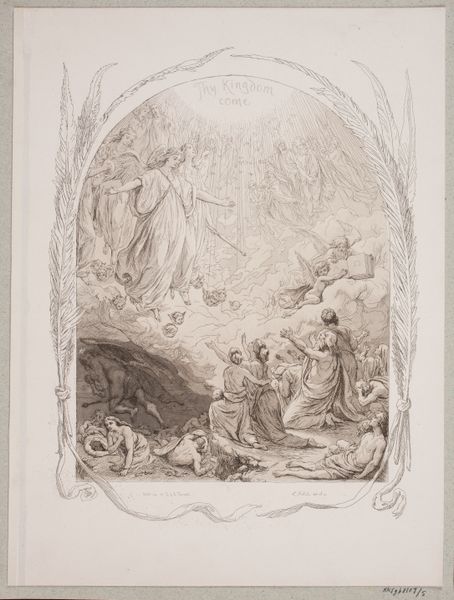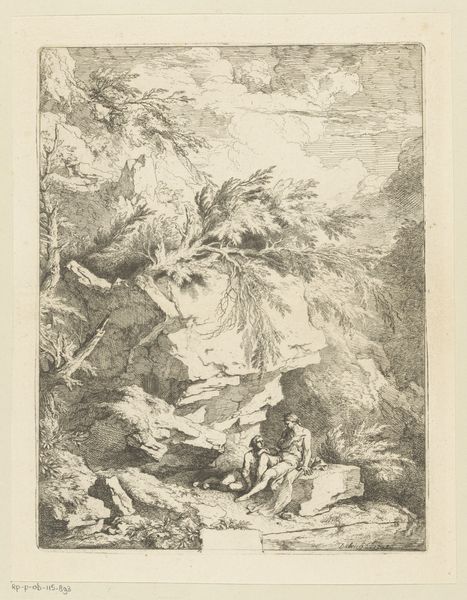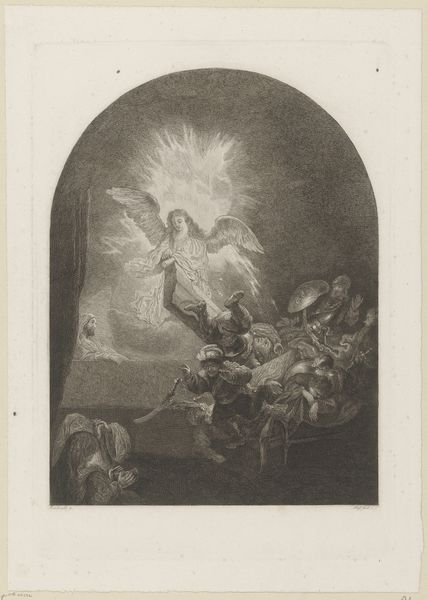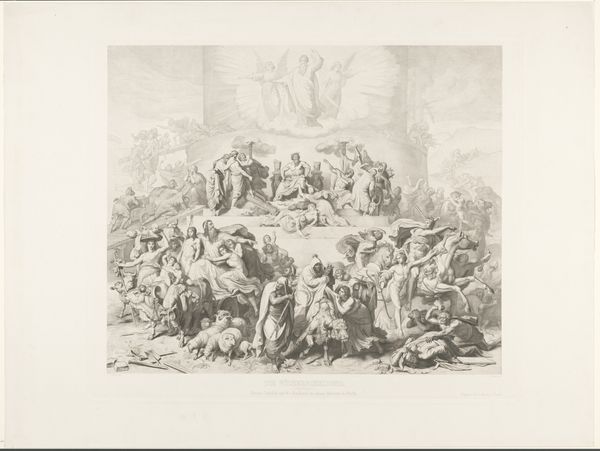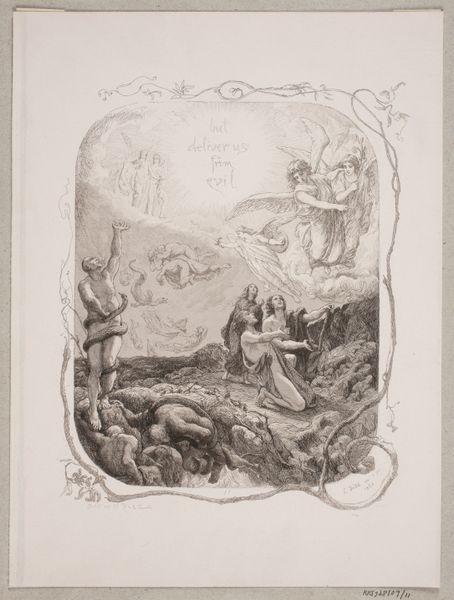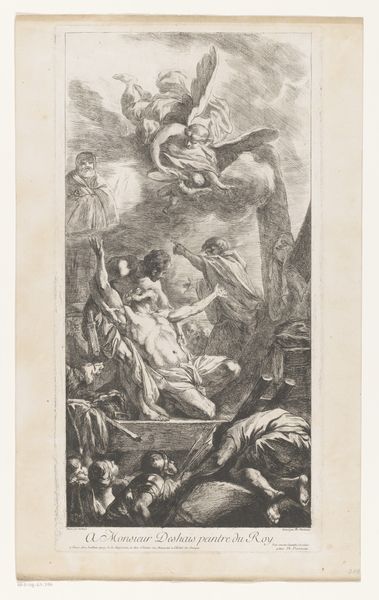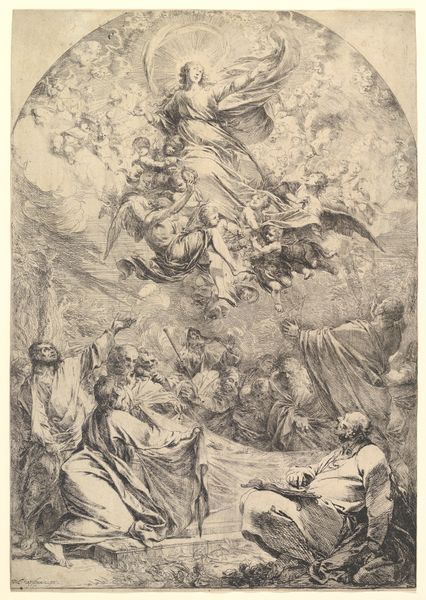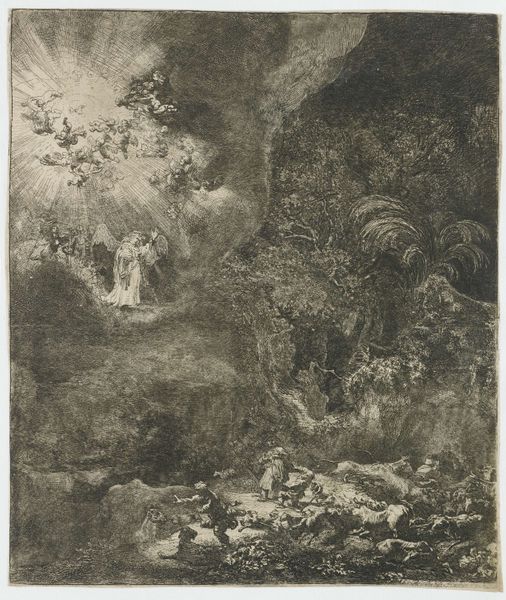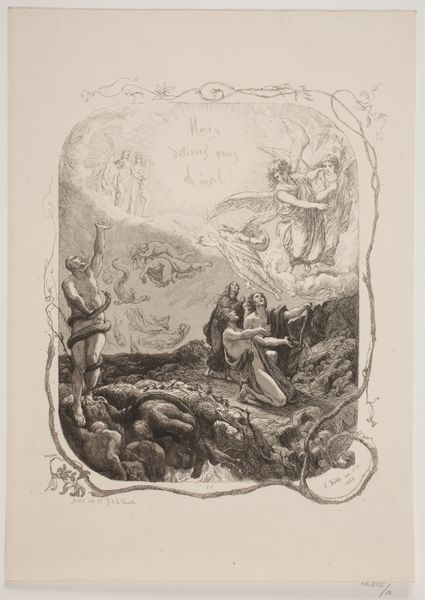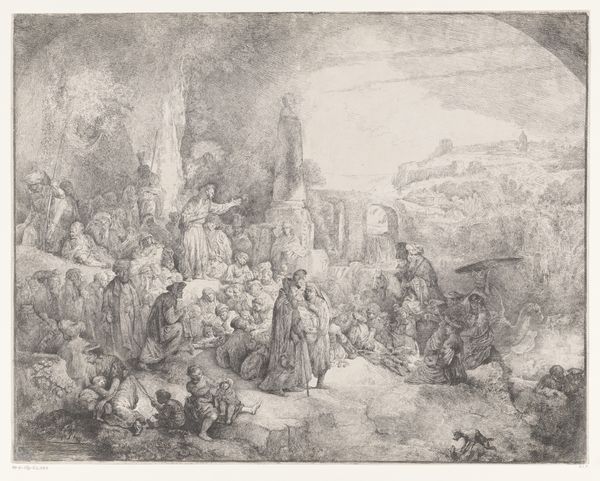
Dimensions: 306 mm (height) x 220 mm (width) (bladmaal)
Curator: Here we have Lorenz Frølich’s "Illustration til 'L'Oraison Dominicale'," created in 1863. It’s an engraving done with pen and print. Editor: My first thought is, what a flurry of visual activity, and primarily in grayscale tones. It has this dramatic quality, like a stage setting caught between shadow and light. Curator: Precisely. It's a product of its time. Consider the influence of Romanticism, visible in the stylized drama and idealized forms. Frølich, deeply embedded in the cultural shifts of mid-19th century Europe, sought to evoke emotional responses. Think of the relationship between art and rising nationalism, especially with Frølich's later illustrations for Norse mythology. Editor: Interesting, but looking closely at the engraving technique – the dense hatching and the delicate lines that define the figures – you start to see the labour involved. It would've taken a painstaking process to carve into the metal plate. The resulting prints then become more accessible images, extending the reach of the religious scene. Curator: Exactly! And think about the consumption of such images. Beyond mere aesthetics, they acted as vehicles of morality, religion and education for wider audiences. How the artistic choices shape its meaning is the question here. Editor: Yes, I'm just questioning how art history, at times, focuses heavily on symbolism, which detracts from the labour invested. Look at the lower segment – an earthly gathering observing the skyward promise. Those figures aren’t only signifiers, they are representations of work, worship, poverty… Curator: Agreed, we should also look at who commissioned such works, where were they displayed, and who was being left out of this narrative. Those are vital. Editor: Food for thought as we view these artworks. A constant push and pull, balancing material circumstances with broader cultural and historical understandings. Curator: Absolutely. There's always more to unearth beyond the surface.
Comments
No comments
Be the first to comment and join the conversation on the ultimate creative platform.

